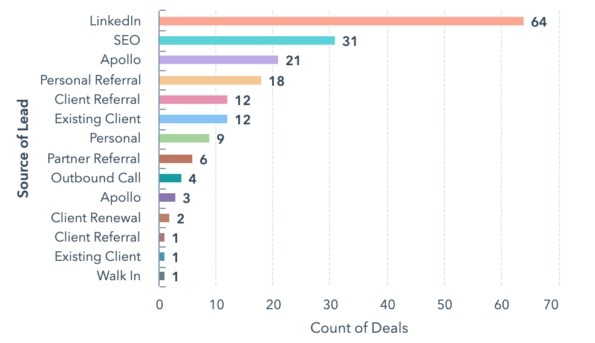Top Performers Use or Have Sales Playbooks
Sales Playbook: An approach to building dominant-level digital sales and marketing capabilities in this modern age is no different than climbing Mt. Everest.
In the last 20+ years it’s been laser engraved on my brain that if you don’t have a target to shoot at you can’t hit it – simple as that.
Once your goals are defined, we have learned more recently the biggest online marketing challenges, in general, are narrowed down to the three main categories.
If you want to download the entire copy of this blog, click the Download Now button below.
Do any of these describe you?
- No Plan for What to Do:
Our marketing has worked fine, but we have hit our limits. We don’t have a plan or the right people for getting to our next level and need help with a plan and execution of that plan. - Unclear How to Get There:
We have our goals and we THINK the right people on the team, but don’t know where to start, what ROI to expect or what it should cost to get more AND better leads. - Need to Define Who It Takes:
We need to re-define or define who we are, what we sell and who we sell it to. Most businesses go through this about every 2-5 years depending on a few factors.
Because Fannit is an Internet Marketing Agency that has seen a lot come and go, we decided to put together a playbook for potential clients facing these challenges. And it all starts with data.

What is a Sales Playbook?
So, a lot of sales reps and managers have a plan, but quite often fail in the sales process to sell to their capacity. A sales playbook is a recipe for companies’ salespeople and marketing to develop the skills it takes to sell more product or services.
A critical part to a playbook, especially a sales playbook is making sure sales reps and marketing are using it to reach common goals that could include.
- Defining who your ideal customer is
- Identifying the companies you are targeting
- Understanding the sales and buying process
- Determining the best way to prospect for leads
- Define tools and analytics to use on a day to day basis
Sales playbooks should also make sure you identify critical best practices with the technology used in the sales process.
I’ve spent the last two decades in the trenches building businesses and organizations from start-up, to sub-one million, to almost 30 million in annual revenue. It may sound cliche, but I wish I would have had a sales playbook – a practical and tactical guide to show me how to work with marketing to get me the opportunities I needed.
And my hope is that this blog and sales playbook download becomes a shot of inspiration for you to build a well-oiled lead and revenue gen machine for your business.
What Should Be Included in a Sales Playbook?
This blog article is meant to be a summary to spark your selling motivation and give you some ideas, but If you want to jump to more details of any of these subjects, below are links to resources Fannit provides.
- Recognize Your Top Marketing Challenges (5 major problems marketing managers face)
- Define Brand Identity (Brand Design Development)
- Understand and create IDEAL Buyer Personas (Customer Segmentation)
- Build a Website to Represent Your Best Sales Person: Must-Haves
- Create Sales Funnels
- Build a Marketing Plan
- Create a Marketing & Sales Budget
- Use Both Inbound and Outbound Marketing (Inbound vs Outbound Marketing)
- Leverage Search Engine Optimization (SEO) (What Does SEO Stand For?)
- Build a Rhythm with Campaigns
- Always Be Producing Relevant Rich Content Marketing
- Measure Performance Regularly
- Provide Documentation & Training
Getting Started
Before you jump into this B2B sales playbook, you should first understand that sales and marketing are one unit, one team.
Traditionally, Sales has thought of Marketing as fluffy, colorful attention getters while Sales are the pragmatic closers of new business.
STOP!
This guide is here to help you first understand the top challenges, structure, and key responsibilities of sales and marketing teams so you can focus them to work together to achieve better results.
HINT: even if you skim through this sales playbook or any of the variety of sales playbooks out there, you’ll find one or two areas you can get your people talking to each other about how to address major issues, discussing best practices, getting new customer revenue … you will have taken a great first step.
Typical Sales Challenges to Overcome
As mentioned at the beginning of this post we’ve pretty much seen every challenge across multiple industries it takes to build a customer base.
The following is a shortlist of the 10 more specific sales and marketing challenges we help our clients face and overcome no matter the industry or size.
- We aren’t really sure who our most IDEAL client is.
- We’re spending money on marketing, but the ROI isn’t that clear.
- Our marketing team is doing a lot, but the sales results don’t seem to be there.
- Our website doesn’t really describe who we are very well.
- We know our business, but don’t know much about how to use the Internet
- Our team doesn’t get enough qualified sales leads
- We’ve built our business on referrals, but want more – we need a plan
- Things are changing so fast with digital marketing, we can’t keep up
- We have all the data analytics we need, but don’t know what to do with it
- Our sales and marketing don’t talk, so we’re often out of sync
So, all of these hurdles can be overcome by starting at the foundation of each issue, staying focused until you have each problem resolved.
Your business may already be a top brand and have a playbook, but are looking to fix a few specific issues. You may want to look atHow to Fix 5 Major Problems Marketing Managers Face.
One of the fundamentals of resolving major issues is to understand them at the core. We’ve found that typically issues reside in one of the following areas.
- People – do you have the right person in the right role?
- Process – do you have a standard operating procedure that gets the job done?
- Technology – are you missing a piece of technology you need to automate?
- Incentives – are your people incented correctly to get the right jobs, at volume done?
- Timing – is work getting done on time.
I’m sure there are other specific reasons that issues exist, but these are the typical areas where we see issues existing.
Now, we’ll walk you through each area of sales and marketing to see if you can clearly define the issues you are having.
Define Your Brand: A Simple List of Elements
What does it mean to have a brand? The answer to this question is likely different depending on who you ask, but the best way I’ve heard it best described is – having a brand means you are providing a carefully crafted experience.
Why do you define your brand? You will need to define, document, and create a Brand Identity System.
Because an identity system illuminates a company’s personality — the perception customers have about the company. The experience they should have.
Customers expect this “personality” every time they interact with the company in all of its dimensions — customer service, advertisement, graphics, websites, apps, podcasts, social media, commercials, and, of course, products and services delivered by your people.
Fannit’s brand is engineered, capable, and growth-driven.
Without the standardization of an identity system, a business is left to inconclusive internal opinion and the risk of shallow marketing pursuits. If the public (your prospects) don’t know who you are and feel disconnected, they won’t have a very good experience.
The following is a quick checklist of the elements you will need to define when creating a brand identity. You can also read the Simple Guide to Developing Your Branding for more details.
- Core Values
- Culture
- Vision
- Mission
- Purpose
- Color scheme
- Design
- Inspirational Mood Board
- Logo
- Font
- Symbols (Icons)
- Website
- Email Templates
- Social Media Visuals – here are the best times to post on social media
- Sales Slide Deck Template
- eBook Cover
- Call-to-Action Image
- IDEAL Buyer – type of business who buys from you
- IDEAL Buyer Persona – which roles within the IDEAL Buyer that buys from you (top prospect)
- Core Messaging
- Sales Copy
- Services / Products & Pricing
- Sales Process – these are your sales stages, the gates each prospect must go through with a member of your team
- Customer Onboarding – we built a process we call IRON that we run in the first 30 days of being a Fannit client
- Customer Success
- Referral
Your Website SHOULD Be Your Best Salesperson
In general, your website is made up of three top elements in order provide you with a great online sales person.
Your Technology Stack: Your website should be fast, technically sound for search engines, secure, and relevant to the people visiting it.
Digital marketing requires your team to manage a “stack” (a set of) technology. This set of technology can be very complex or very simple.
Fannit manages and provides technical support for websites to support our clients’ SEO efforts and visitor experiences.
- The marketing technology stack we operate for clients typically handles the following depending on which industry your business resides in.
- WordPress and Plugin Updates
- Speed optimization
- Mobile performance optimization
- Backups
- Security
- Domain Management
- Marketing automation and or email marketing
- Sales enablement
- Reputation management (review campaigns)
- Google My Business listings
- Google Local Services
The Human Experience: When people choose to visit your website, they have done so with expectations in mind based on how they discovered you and WHY they are interested in looking at your site.
Each path a user takes on your site to find information is a ‘funnel’. Or more commonly referred to a Sales Funnel.
Operate under Growth-Driven Website Design principles and processes.
We are constantly learning how to best drive people to our website and this is the system and processes we use to update the website to keep up with how Google reads, speed, mobile performance, design that convert better, etc.
- Gather usage and interaction data
- Formulate a strategy for why you want a new website design
- Build a wish list of design elements and functionality requirements
- Release a launchpad site – a functioning
- Review performance and engagement every quarter
- Scroll behavior
- Click behavior
- Recorded user behavior
- Lead conversion rates
- Most viewed blogs or other pages
- Top conversion paths – steps people take to convert
- Make smaller, iterative design changes based on what you learn from the marketing, sales, and management team
Sales Copywriting: When people skim your website, they are looking for well organized information that is easy to read and helps them do what they need to do.
- Find great educational information
- Download valuable information
- Learn more about your products and or services
- Learn more about your company
- Contact you easily
To get into the details about what your website should have, you may want to download 25 Website Must Haves.
Do You Have Who It Takes to Succeed?
The Founder and CEO of one of our clients (The Steve Trautman Company) has written a book called Do You Have Who It Takes.
His premise is that top performing brands have a knowledge transfer system to make sure tribal knowledge within the company, division, group or team is efficiently passed down through the organization as any potential risks to lose knowledge occurs – someone retiring, job changes, etc.
Steve also has a way to make sure there is not an imbalance of certain levels of knowledge across the team.
This same view of the world exists in small and large businesses and in departments like marketing and sales.
So, we have learned that top small-to-mid-sized brands, develop standard operating procedures (SOPs) for critical roles and functions within the digital marketing and salespeople. We had to do it here at Fannit too.
Below is a brief outline of the major roles within a sales and marketing team at a mid-market business generating $20-30M+ in revenues.
First, define and document the roles & responsibilities for the Sales and Marketing teams: Here is an example list of the potential roles for a small. Your business might differ slightly and may not have all these roles, but you get the idea.
- Director of Sales & Marketing
- Sales & Marketing Manager (marketing management, reports to the Director of Sales & Marketing)
- Client Success Manager (sales)
- New Client Onboarding
- Client Quarterly Business Reviews
- Client Renewals
- Business Development Rep
- Marketing Coordinator
- Content Manager
- Content Writer
- Copywriter
- Citation Manager
- Backlink Manager
- Video Editor
- Graphic/Digital Designer
- Data Analyst
Establish compensation and incentives for the positions and a description of the promotional path. Incent each role based on their function.
As examples. Copywriter – words per period. Backlink Manager – number and quality of links per period. Business Development Rep – number and quality of new Connect Calls each period.
A period of time could be a week, every other week, month, quarter or year. Whatever it is, you will also need to provide training so average performers can become top performers.
With clear direction and properly incentivized staff, you will start to see increases in company performance.
Does your business have who it takes, but do they all know what it takes to be successful as a marketing and sales organization?
Working Together: Sales and Marketing
Working together to achieve clearly identified goals has been talked about for decades.
We have found that working together means that everyone knows their role, responsibilities and meet regularly to discuss performance. It’s about focus.
Your team will need to establish Qualitative and Quantitative Goals your team and have a process for evaluating performance against them every quarter.
- We track goals and process with Tasks and Milestones in Teamwork
- Meet regularly to examine performance. Here are a few high level metrics to look at.
- The faster your business is moving, the more frequently you will need to meet
Below are some numbers we get out of a customized dashboard in HubSpot. This helps make sure both sales and marketing understand what they are accountable to.
Number of New Sales Opportunities Trend

Sales Forecast by Stage to Goal

B2B Sales Trend to Goal

New Marketing Qualified Leads

Deals by Sales Stage

Source of Deals

Everyone needs to be working off the same sheet of music.
If one team is out of sync, the entire team is out of sync. No finger-pointing, blaming – find solutions together.
You must also define the key processes that are required to be repeatable and scalable by the marketing and sales personnel. Below is a basic list.
- Brand management
- Marketing and business development
- Sales – closes the business
- New client onboarding
- Client success
- Analytics and reporting
- Billing and collection (or Accounts Receivable)
- Documentation and training
- Third-Party vendor and tech management (as needed)
- Technology Management
Critical Elements That Go Into Managing a Marketing and Sales in Companies
First, you need to understand your business identity and the IDEAL buyers and buyer personas you are wanting as new clients along with the value, service, or utility you provide them.
From here you can build the systems, processes, and team to help you grow sales.
We’ve learned that this is an iterative process. Hopefully, it takes you fewer iteration cycles to get it right for your business.
Your Team and Processes:
If you do not have this built for your business, below is an abbreviated list of areas to focus on.
- Understand the Vision, Mission, Strategy & Purpose of the company
- Understand the guidelines for managing the brand. You should have foundational documents that tell you this.
- Colors
- Logos
- Core Messaging
- Manage Quarterly Growth-Driven Website Design Process
- Analyze Performance
- Sharing Knowledge
- Define Next Priorities
- Implement Changes
- Services / Products & Pricing (Revenue Model)
- Roles and Responsibilities
- Compensation and Incentive Models
- Sales and Marketing Org Chart
- Diagram All Core Marketing & Sales Processes – we use a (Lucidchart Workflow Diagrams)
- Create Instruction Manual for Roles in Marketing and Sales (SOPs)
- Teamwork Milestones
- Teamwork Task Templates, Tasks for Standard Operating Procedures
Ongoing Management of Your Marketing & Sales Personnel:
To achieve results (new leads, new sales, and revenue) you have to manage to success.
Here are a few tips you can follow as a marketing or sales manager.
Establish a Regular Meeting Schedule
- Weekly – are we doing the day-to-day things right?
- Monthly – progress & performance reports
- Quarterly – create themes
- Annually – annual analysis and budget planning
Create an Annual Marketing Plan based on Top 10 Reasons Most Digital Marketing Campaigns Fail
- Define Sales & Revenue Goals
- Define Stages in the Sales Pipeline and Manage in CRM
- Create and Manage to Weekly Blogging Schedule – 7 habits you should develop to scale lead generation through blogging
- Manage Social Promotion
- Implement a quarterly Website Audit (TRAP Signals – SEO Basics)
- Create and Manage Marketing Calendar
Make sure everyone has access to and manage all key technology. For example.
- Website
- Marketing Automation
- CRM
- Social
- Domain Controller
- Establish Call Monitoring System for tracking phone calls
- Record calls for quality assurance
Establish a Close the Loop Process Between Sales and Marketing to measure the following employee.
- Lead Gen
- Sales
- Revenue
Calculate Key Financial Metrics
- Cost per SQL
- Avg Revenue per Client (MRR and ARR)
- LTV (Lifetime Value) of Ideal Clent – How long do your clients stay with you?
Establish and Manage Local Office Review Campaign
When it’s time to evaluate advanced marketing tactics to promote the new band you should consider some of the following tactics. These all depend on the market niche you are targeting.
- Start a podcast
- Paid advertising for valuable content we know people like to download
- Host local meeting groups
- Advertise on radio as broadcast strategy
- Account-based marketing strategies to target specific, larger client targets
- Traditional PR and online press releases
- Video content production
- Write a book… or hint: a playbook
- Book CEO or other team members to speak at events
- Outbound appointment booking by phone
I highly recommend managing to milestones and track day-to-day work completion while meeting weekly to review progress.
Smaller gains every week will get your capabilities built fairly fast.
What Is My Digital Marketing Manager Supposed to Be Doing?
I’m sure there are several job descriptions out there for this one, so I’ll keep in simple – they should be managing Inbound marketing and outbound prospecting for your business.
Marketing managers should be generating fresh, new, highly qualified leads for your business through online resources.
- Marketing Manager
- Manage weekly meetings with the marketing team
- Send out meeting minutes after meeting using Teamwork Messages
- Write Marketing and Sales communications (connect messages, sales qualification emails, marketing nurturing emails)
- Write Sales Copy for website
- Based on marketing funnels
- Use the Inbound Methodology to guide
- Set up Automation and workflow logic in CRM
- Provide Continuous analysis of SEO Strategy and Organic Search Results
- Establish and continuously improve Onsite/Offsite SEO
- Local citation management for GMBs
- SEO and keyword research and strategy
- Site structure
- Information architecture
- Pillar pages
- Intersite linking
- Use TRAP (Technical, Relavancy, Authority, Popularity) Analysis to audit website organic search performance quarterly
- Local review campaign for local listings – good popularity – here are top local ranking factors for best local SEO
- Build out Google My Business locations. Evaluate website performance quarterly based on TRAP and make fixes.
- Technical – is the site crawlable and fast?
- Relevancy – is the content we’re publishing relevant to key topics?
- Authority – domain authority has a lot to do with how long its been around and how relevant the content is on your site.
- Popularity – are people talking about your site on social or other sites
- Operate a blogging / content schedule. Provide training on the following for creating content for blogs and other web pages.
- Research
- Writing
- Proofing
- Posting
- Create a marketing and sales budget
Your Marketing Manager should be making sure all the tactical work is getting done with an deep understanding of the ideal targets and lead gen strategies.
A strong marketing manager has a counterpart on the Sales team. In smaller businesses one person plays these roles.
What is Sales Supposed to Be Doing? Best Practices
Again, there are likely oodles of job descriptions you can find by searching Google, so this will be a simplified version for your pragmatic lizard brain.
The following are key elements Sales should be responsible for.
- Sales often is the one who defines your value proposition because they talk to clients and intimately understand what closes business and what doesn’t. You will want to ask them questions like.
- What are we really selling?
- Who are we selling it to (Ideal Buyer and Ideal Buyer Personas)
- Top competitors
- How we are different
- Why what we provide is what our clients want
- What the top challenges we help our clients solve
- What top objections we encounter
- How we price our offerings
- Services and or Products we provide
- What our revenue model is and how we make money
- Outline sales stages and determine the information needed at each stage. Without know the steps of your sales stages, it is difficult to know where issues during the sales process may be occurring.
- Platforms for outbound prospecting – create copy and automation to support these channels
- Outbound cold emails (Apollo)
- LinkedIn prospecting
- Personalized video emails
- Inbound sales call recording – training (CallRail)
- Record planned sales calls (Uberconference)
- Set up Sales Pipelines with sales stages in order to track sales activities.
- Sales Qualification – Connect Calls
- Active Sales – Once Qualified on Connect Call
- Existing Client Sales
- Review sales performance (Close the Loop) monthly. Did any of our calls and form request turn into Connect calls or New Clients
- This includes existing and new client opportunities
- Are the form fill outs and phone calls leading to sales and revenue?
- Track with a spreadsheet Fannit provides and review monthly
- Close the right type of business. Many young sales teams can close business, but on occasion, they may not close the right business.
For example, maybe you need to win new business in a specific set of industries because your production team knows how to deliver services in those industries best.
And because opportunities for new sales often come to you randomly, your sales team will need to learn to turn away new customer revenue if it doesn’t fit.
It is difficult to turn away easy sales and revenue for some newer sales teams because they want to hit that revenue goal.
When sales and marketing is on lock step, it makes growth a lot easier.
Without Analytics and Reporting You Can’t Close the Loop
Just like the engine in a car, there are many parts to sales and marketing that need to operate well in order for the machine to operate efficiently and effectively.
- Provide performance analytics for processes (includes monitoring phone call volume and if needed, record phone calls for quality control). Measure all of the following KPIs
- New phone calls (first time callers)
- New form leads (contact us, download of marketing collateral)
- New MQLs (Marketing Qualified Leads)
- New Connect Calls the sales team is setting
- New Scheduled Discovery Calls (SQLs)
- New Clients (closed Deals)
- Track and review number of new MQL Connectcs / Quotes
- Track and review click and scroll performance to analyze how best to optimize site design for lead conversion conversion
- Track and review SEO performance
- Track and review sales pipeline performance (SQLs)
- Track and review website technical performance (speed, authority, relevancy, popularity)
- Make sure you are hitting Revenue goals
- You need to understand your COGS (Cost of Goods Sold) – for service companies your “goods” are your people delivering services
- What additional Expenses besides your COGS do you have
- Owners love bigger Net Income because they typically re-invest it into growth
Sales organizations also need to be in tight communication with Finance so revenue and the cost of revenue is very clear.
Remember, booking new sales is NOT the same as generating revenue. For example, your sales team may ‘book’ a new annual contract worth $100,000 in December. But, the client is only required to pay you $8,333 (1/12th of the total contract) in January.
In this case, Sales is typically not paid out for this new sale until February. This is how Finance makes certain to not over spend.
Bottom line, if you’re not measuring the right elements of sales and marketing, you will not be able to know if or where improvement is happening at the pace you need it to.
Provide Documentation and Training to Pass on the Knowledge
In order to transition knowledge to new employees, staff in new roles or contractors you will need to provide training on all the above processes we’ve outlined.
When creating your SOPs (standard operating procedures) or a playbook, don’t forget to set the stage by asking the following questions before you write everything down.
- Which role is performing the work?
- Why are they doing the work?
- What steps do they need to take (video, business process, written instructions)?
- Which software/systems are being used?
- Is there a simple task checklist that can be followed?
There are entire departments in large enterprise companies who are responsible for ‘change management’ – the updating of SOPs as they adjust to fit newly discovered ways of doing things.
Your small or medium-sized business won’t need a department, but you should think through who should update your SOPs when they change.
Bottom line, the faster you can create reliable, effective operating procedures, the faster you can teach new players on your team as you grow.
Final Thoughts
There is a lot to consider if you’ve made it to this point in the blog and looking for a sales playbook or sales process.
I’m sure your business has pieces of all this put together and I realize it’s a work in progress for all of us.
My advice is to take on a little at a time and make small iterations and always be training the next players.
It took us a few years to get to this point and we’re still always looking to get better.
We’ve also helped a number of companies over several different industries at various stages of their digital marketing and sales development and I can tell you that every business has their strengths and weaknesses.
It’s up to you to find… and fix… yours.
The key is to develop the discipline to always improve and have the right people that fit your culture – it helps to have a playbook.

